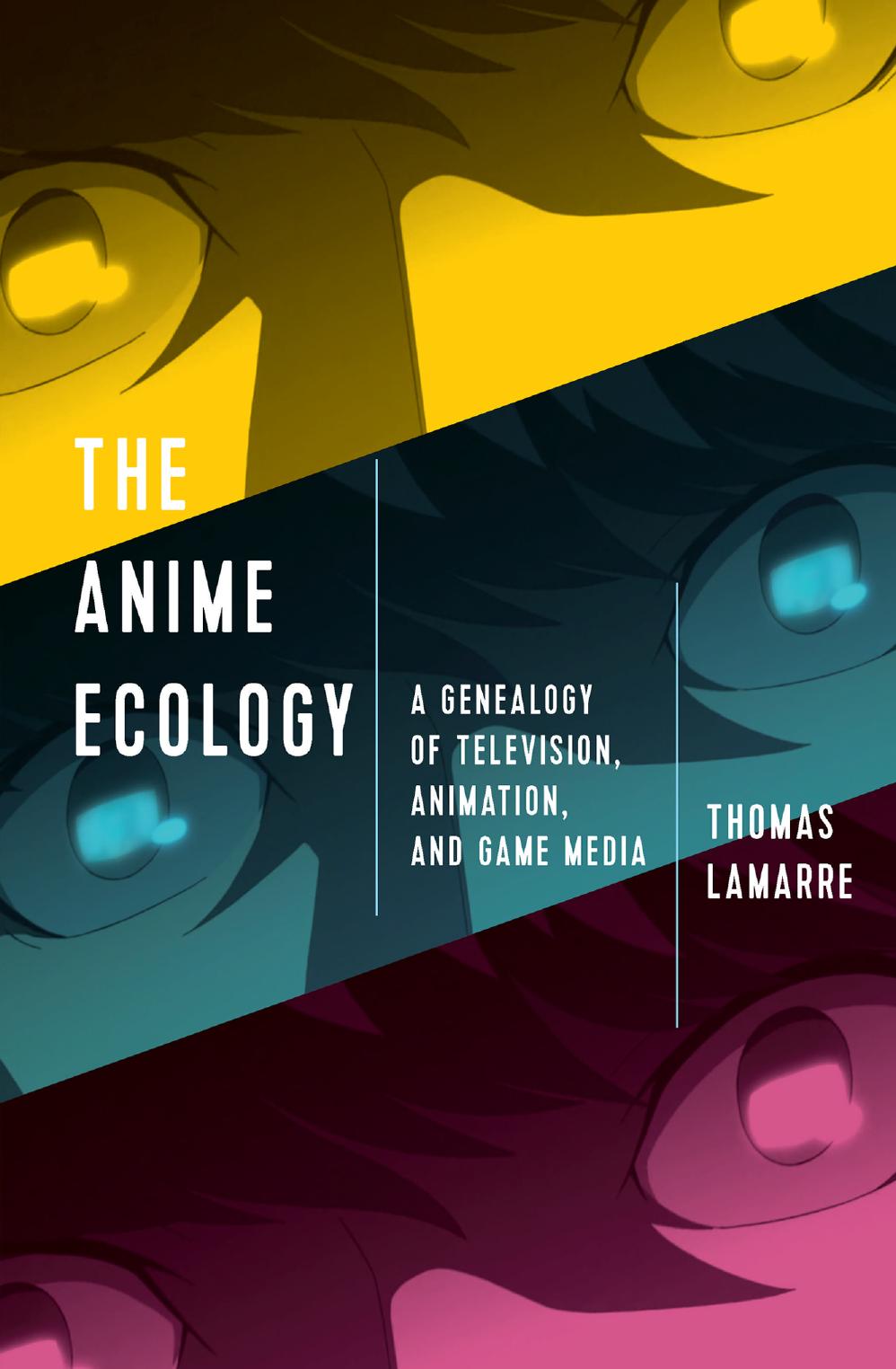The Anime Ecology: A Genealogy of Television, Animation, and Game Media by Thomas Lamarre

Author:Thomas Lamarre [Lamarre, Thomas]
Language: eng
Format: epub, azw3, pdf
Publisher: University of Minnesota Press
Published: 2018-03-12T23:00:00+00:00
Code Switching
Åtsuka Eijiâs and Azuma Hirokiâs accounts invite us to consider media mix in terms of a relation between character and world that is mediated through story-play or fabulation on the part of the consumer. Ian Condryâs account introduces a slightly different triad from the perspective of the producers of anime series: characters (kyarakutÄ), premises (settai), and worlds (sekaikan), âspecifically, the design of characters, the establishment of dramatic premises that link the characters, and the properties that define the world in which the characters interact.â[14] Nonetheless, accounts of media mix generally gravitate toward the anime character, for the character is the point of the triangle where it is relatively easy to gauge the pressure exerted by the other two points: the world or worldview, and the dramatizing or fabulating. Indeed, the anime character appears to have incorporated world and story-play into its very being. Thus the anime character may be considered to be social technology. This is why Condry calls the anime character a generative platform.
Looking at the anime character from the angle of the media platform and its infrastructures introduces a different yet complementary perspective. The emphasis is less on interactions between producers and consumers and more on intra-actions generating them and generated through themâthe productive force of distribution, and the distributive force of television media. Producers and consumers are generating and playing on the same electromagnetically charged field, but that field is only charged because they are not distributed evenly or equally. Thus we need to think about the media mix less as a combinatory system and more as media ecology (forces and relations entailed in the production of distribution). Let me begin by focusing on a fundamental tension between the basic structure of anime episodes and the ecology of their media reception. In this way, I hope to gradually reveal what I think is a more fundamental tension between code switching and media switching.
Hatakeyama ChÅko and Matsuyama Masako provide a detailed analysis of the basic structure of the thirty-minute episode of animated television series, focusing primarily on the original 1963â67 Tetsuwan Atomu (Astro Boy) and its 1980â81 remake; the years 1985 and 1995 in the long-running Doraemon animated series (1979â2005); and finally Pokémon, which began broadcasting in 1997. Their central structural analysis thus roughly covers the four decades from 1960 to 2000. Particularly striking is the degree to which the basic structure of the internal segmentation for an episode remains in place. The basic pattern is as follows: commercial, opening, commercial, first half of the story, commercial, second half of the story, commercial, preview, ending, commercial.[15] Striking, too, is the degree to which the timing for the segments remains the same across four decades. As might be expected, there are some changes, such as a slight decrease in the story time and an increase in the time allotted to commercials. But these changes are minor. Consider, for instance, Hatakeyama and Matsuyamaâs parsing of two episodes from the Doraemon series (Figure 9.2).[16]
The segmentation of televisual flow within the
Download
The Anime Ecology: A Genealogy of Television, Animation, and Game Media by Thomas Lamarre.azw3
The Anime Ecology: A Genealogy of Television, Animation, and Game Media by Thomas Lamarre.pdf
This site does not store any files on its server. We only index and link to content provided by other sites. Please contact the content providers to delete copyright contents if any and email us, we'll remove relevant links or contents immediately.
Call Me by Your Name by André Aciman(18967)
Ready Player One by Cline Ernest(12839)
How to Be a Bawse: A Guide to Conquering Life by Lilly Singh(6693)
Wiseguy by Nicholas Pileggi(4586)
The Kite Runner by Khaled Hosseini(4437)
On Writing A Memoir of the Craft by Stephen King(4214)
The Crown by Robert Lacey(4105)
Audition by Ryu Murakami(4099)
Call me by your name by Andre Aciman(4073)
Harry Potter and the Cursed Child: The Journey by Harry Potter Theatrical Productions(3965)
Gerald's Game by Stephen King(3918)
The Perils of Being Moderately Famous by Soha Ali Khan(3783)
Dialogue by Robert McKee(3582)
Dynamic Alignment Through Imagery by Eric Franklin(3489)
Apollo 8 by Jeffrey Kluger(3200)
How to be Champion: My Autobiography by Sarah Millican(3186)
Seriously... I'm Kidding by Ellen DeGeneres(3100)
Darker by E L James(3088)
History of Dance, 2E by Gayle Kassing(3000)
